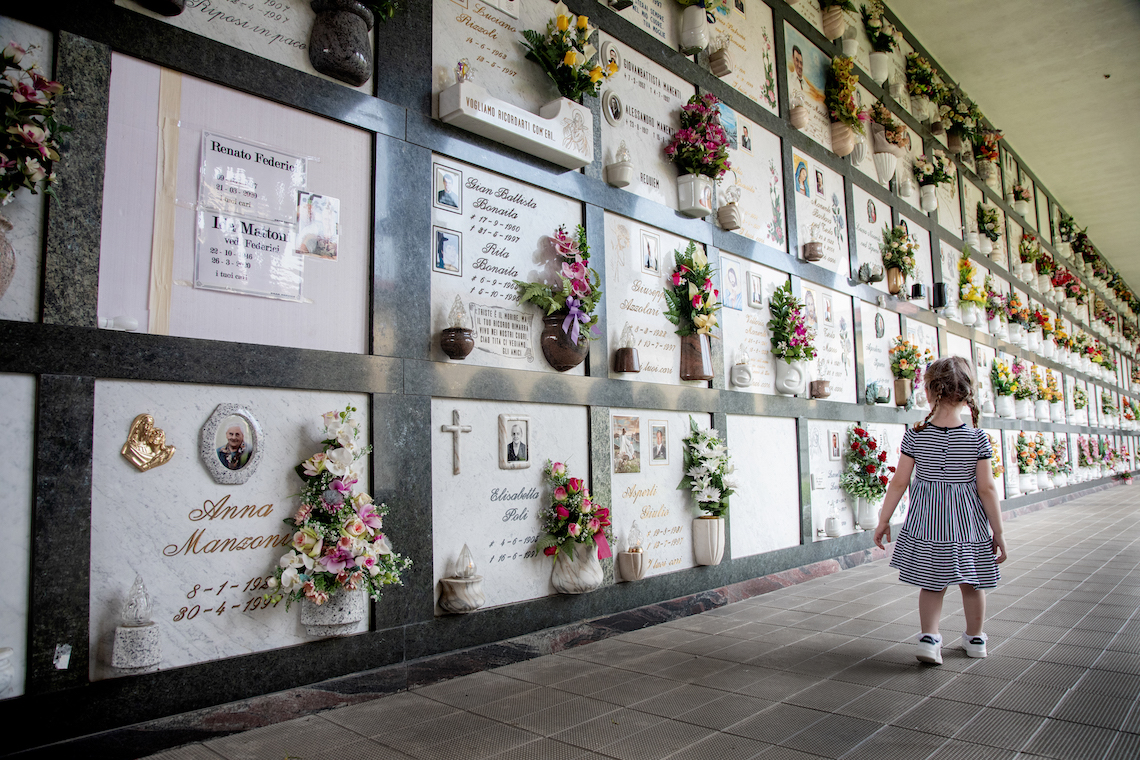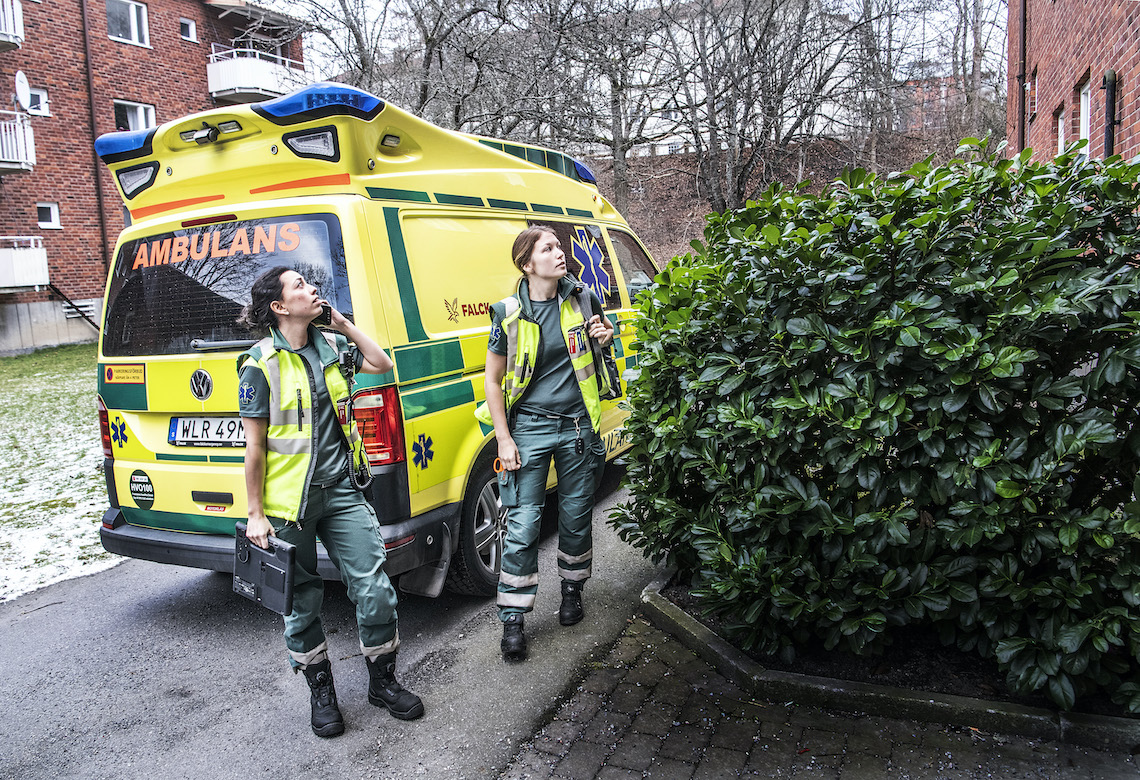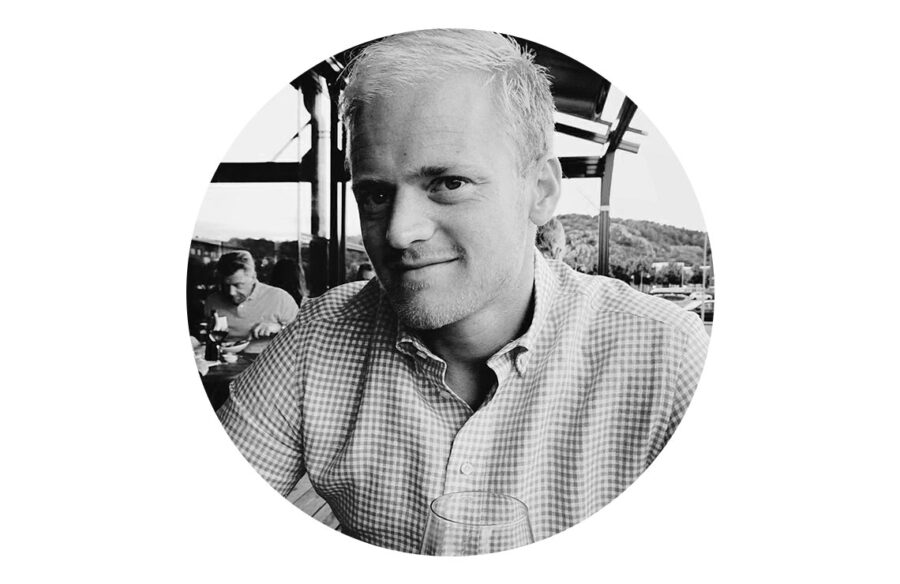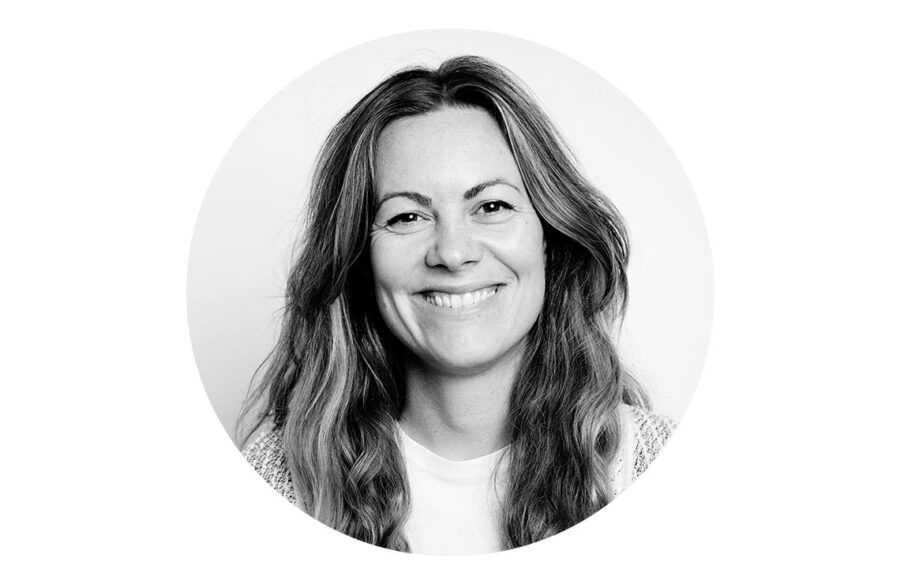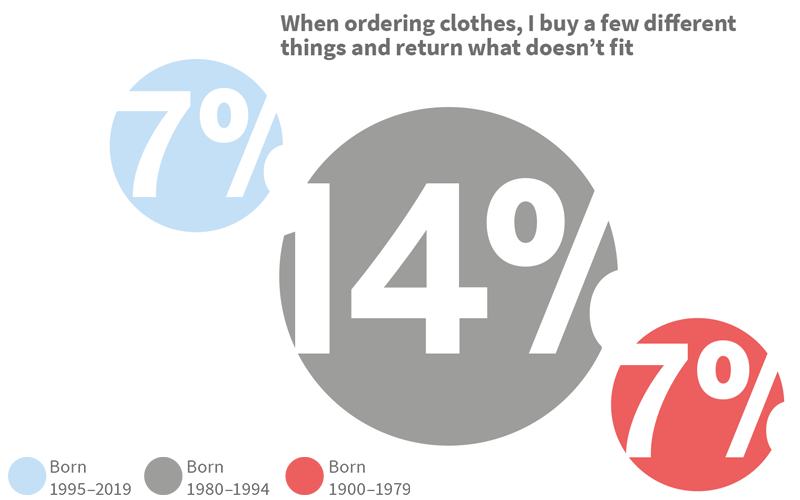Our project will search for the best way to work

Our project will search for the best way to work
On March 12, 2020, all Schibsted employees left our offices to go home. And stayed home – our living space became our workspace. But where do we go from here? To investigate this Schibsted has initiated the Future of Work-project.
Despite obvious challenges, working from home has surpassed all expectations. In fact, we (employees worldwide) have actually been more effective per day, at home. We are more focused, and more productive. Comprehensive studies show that we work on average 1.2 hours more. In addition, many of us save on the time and stress due to our daily commute – benefiting ourselves and the environment, with less travel-based emissions.
However, there are some risks emerging. Self-regulation can be an issue and there can be a tendency for increased stress, which in itself can contribute to employee ”burnout”. Our work-life balance, previously so clearly defined, becomes blurred – where does the office end and home begin? Many of us also miss working in teams, collaborating face-to-face and socializing with colleagues. Those spontaneous chats by the coffee machines – the laughs, inspiration and shared ideas – are simply no more.
A better working environment
This work-from-home period is and has effectively been a giant pilot exercise, one we must learn from to mould a better working environment for the future. What are the advantages and disadvantages? What are our key learnings so far? How can we adapt to optimize?
At Schibsted we’ve started by asking our employees what they want.
Change is the short answer. In surveys over 60 percent have expressed a preference for mixing working from home, remote from other places and working from the office and almost 20 percent want a fulltime home office.
Now it’s up to our leaders, to listen to these employee needs, to harvest great ideas, try them out and discover the best way to meet the changing requirements of our employees and the business itself. A challenge, but also an exciting opportunity – and this is where the Future of Work-project comes in.
The project will focus on four key areas: Leadership, workplace, employee experience, and collaboration.
The project is experiment-based to determine how we can adapt as a business and employer, creating the culture, infrastructure, routines and leadership for the future.
We will test and research
It will be exploratory, comprehensive and inclusive – we will involve all of our brands. We will take time to test and research internal solutions and look into inspiration and input from external benchmarking and expertise. By experimenting we can see what works well and what does not for our individual brands, assessing strengths and weaknesses.
To help our brands navigate when working with the Future of work-project we have created a framework that can be used as a tool in the process. The framework helps brainstorm, set direction, define specific goals and what to measure.
Apart from the focus areas we have defined a set of guiding principles that involves culture, innovation and sustainability to help us make choices and provide direction as we are experimenting our way towards the Future of work transformation.
To stay ahead as a business Schibsted needs to lead change rather than react to it, setting out bold ambitions and finding the strategies, tools and capacity to achieve them. We know we can and must do things differently. In a recent study carried out prior to the pandemic by Morten Hansen, Management professor at University of California, Berkeley, he found only 20 percent of employees, out of a focus group of 5,000, worked efficiently at their offices. So, for 80 percent of people there was a better way of working. We aim to find that way.

Renate B Johnstone
Project Manager Group Communication
Years in Schibsted
3
What I’ve missed the most during the Corona crisis
Seeing people face to face, no doubt!
Leaders under pressure

Leaders under pressure
The responsibilities of business leaders have dramatically changed with Covid-19. We now need to thrive in a new reality while also maintaining innovation and high performance. This puts a lot of pressure on leaders. Mette Krogsrud, EVP People & Corporate Affairs, shares some of Schibsted’s actions to support business and leaders.
It is hard to recall what 2020 was pre-Corona. As I write this, the spread of the virus is still increasing, and we still find ourselves working from home. How will the pandemic impact future business and the way we work? Will there be changes for the better? What about Schibsted, our family of businesses and brands – what will we make of this crisis?
The American economist and Nobel prize-winner Milton Friedman once said, ”Only a crisis – actual or perceived – produces real change”. And these past few months confirm his statement. We don’t know what the future will hold. But we do know that it will change.
We need empathic leaders
It is said that in times of crisis, a leader’s true self comes out. We know from before that empathic leadership is more and more important in our rapidly evolving and complex world, and now more than ever as people are having to cope with disrupted, detached and uncertain circumstances. How may leaders balance their focus on crisis leadership while simultaneously drive business continuity? This is certainly a balancing act and not an easy transition. None of us were trained to lead in a pandemic and new leadership muscles are certainly being tested and trained.
To move forward in a crisis, leaders need to cultivate four behaviors in themselves and their teams, writes Nichols, Chatterjee Hayden and Trendler in Harvard Business Review. They must decide with speed over precision, reliably deliver, engage for impact, and adapt boldly. Inspired by these guidelines, let’s explore some actions Schibsted has taken which adresses these four behaviors.
The beginning of March was chaotic, and the situation was changing by the hour. Schibsted established a Covid-19 task force on March 2 to process available information and rapidly make some bold decisions. Even though the information was incomplete, and emotions and anxieties ran high, we decided to have all employees work from home, starting March 11. Our CEO, Kristin Skogen Lund, held an epic all-hands speech to our colleagues. Heartfelt and calm, she encouraged us all to ”keep calm and carry on. Be safe, look after each other and we will get through this together.” Our 5,000 employees headed home and started getting acquainted with the new reality, clueless as to how long it would last. The majority of us have been working from home ever since. Norway announced a lockdown of the entire country on March 12.
In the first weeks of home office, there was a great need for information and direction among our colleagues. Our Corona task force stayed on their toes, ensuring constant guidelines and communication across Schibsted. A few weeks in, 97 percent of Schibsted employees responded that they were satisfied with Schibsted’s handling of the situation and an impressive 85 reporting a high level of motivation in their work!
A collaborative spirit
To reliably deliver, according to the HBR report, leaders need to align team focus, establish new metrics to monitor performance, and create a culture of accountability. Never have I experienced such a collaborative, innovative spirit, caring leadership and colleagueship, and willingness to change across Schibsted as I did in those first weeks of the crisis! Our second-quarter results and giant acquisitions this summer are certainly manifestations of how our people reliably deliver, with transparency, speed, and courage. The Schibsted share price reached an all-time high and financial forecasts were no longer looking as bleak as they did when the crisis first hit. Our investors, and our own confidence in Schibsted’s ability to deliver even in the midst of a crisis, certainly bounced back into place.
Strong leadership drives high engagement and high engagement drives great results. Through our pulse surveys we identified some areas that were the most important to our colleagues. These areas included: a sense of belonging through interaction with colleagues, information sharing, well-being, and leadership. Leaders across Schibsted have made and are still making many meaningful small and big steps to address these needs.
A toolbox for leaders has been developed – filled with actions meant to engage and fuel interaction and wellbeing even when the casual encounters we all miss are no longer available. These include for instance walk-and-talks, park meetings, after work video conferences – and endless other video conference initiatives across teams and geographies.
In September we launched a state-of-the art engagement programme, ACT, which equips all our leaders to drive change and engagement in their teams on a continuous basis going forward. Now it’s all about engaging leaders and teams to create an impact!
Supercharged change
There is no such thing as ”business as usual” anymore. Almost 100 percent of the workforce is now working from home – some with their kids running around them. Change has been supercharged in the pandemic accelerator and we have all been forced to adapt. The adrenaline surge from the first lockdown shock is fading. Yet, future oriented leaders get ahead of changing circumstances and take action and experiment their way to the new normal. Which begs the question: where do we go from here?
At Schibsted we have launched a Future of work project (read more about it on the page opposite) in a quest for answers – aiming to turn challenges into opportunities. The project team works actively with gathering ideas and learning from experiments internally and externally. Our dream is that our ways of working in the future will make us an even more innovative, agile, collaborative, sustainable and attractive place to work.
I am convinced that how we work will never go back to how it was before Covid-19. How we will work in the future depends on the radical ideas that are lying around as we adapt and develop. Schibsted wants to fertilize the soil from which radical ideas can flourish. We want our leaders and colleagues to experiment, learn, and share on our journey to develop even more innovative and sustainable organizations. It won’t be easy, but as Kristin Skogen Lund said upon the traumatic lockdown day on March 12th: ”Schibsted has endured many crises before and even proved an ability to thrive and grow through troublesome times.” Now our big joint challenge is to design our future of work. I truly look forward to being part of the journey and experiencing the many experiments and radical ideas that will emerge, with or without the virus circling. It’s time to produce real change.

Mette Krogsrud
EVP People & Corporate Affairs
Years in Schibsted
7,5
What I’ve missed the most during the Corona crisis
Time with my family and friends in London
My home office struggle

My home office struggle
Remote first is the new normal. But what about those of us who desperately miss meeting our colleagues, who know how to navigate the office, and who don’t always appreciate mixing work and home space? Will we be outnumbered by a wide world competition or do we just need to break free to truly see the benefits? Join Dan Ouchterlony in his struggle.
Desperate for a human connection
It is March 24th, 2:49 in the afternoon and I have just wrapped up another video meeting. It has been the better part of two weeks since I met a colleague in the flesh, the very same people I normally see several days a week and with whom I thoroughly enjoy chatting, debating, teasing, analyzing and brooding. I deeply miss the instant gratification of office work.
Missing it to the extent that I am about to break corporate policy and possibly Public Health Agency corona-protocol and sneak over to a colleague’s home to meet up. Just sit and work together. Like we used to. Talk about things. Work. Comment on something. Work. Grab coffee. Work. A few of us have plotted this act of rebellion in sheer desperation for a human connection.
During a team meeting we sit in separate rooms in my colleague’s house, so that the others don’t know we broke curfew. Then we reconvene in the living room. As the afternoon becomes evening, we share a bottle of wine and a conversation over a meal, and in the taxi home I feel peculiarly energized. The time we spent was productive, the work we did was creative, I rationalize as the evening streetlights glare through the windows of the car. I cannot rationalize the fact that we hugged each other on the way out, but it felt really good.
Chi mangia solo, muore solo
The kitchen table is where the family spends most of our quality time together as we break bread, look each other in the non-digital eye, and share. As we partake in the deeply cultural, social and symbolic ritual of food, the family bonds deepen. I fondly remember feasts with my parents and grandparents. Thus, I have come to associate our round wooden kitchen table with a positive moment in time and as a positive place in space. Sitting down on the oak Windsor’s sheepskin pad infallibly puts me in a positive state of mind. At least it used to.

Today is April 20th, 9:35 in the morning, and I am anything but positive, despite being in a favorite place. My right shoulder is already stiff, after only an hour of work, and my mind is churning from worry over missing our Q1 targets and a colleague who is seriously ill with Covid-19. As I try to stretch and massage the nape of my neck, I see the post-breakfast mayhem of spilt coffee and unfinished dishes on the table, and the breadcrumbs in the corner of the room sharp in the unruly morning sunlight. An hour earlier I sat down my Macbook in a hurry as my 7-year-old needed more time than usual to get to school this morning. As I fixed my gaze on a puddle of tomato seeds, that just a moment ago were part of a delicious breakfast sandwich, a sense of dread and disgust came over me. Why have I brought the serpent into Eden, brought work into my family sanctum? What if I sit down for dinner tonight and think of an investment pitch instead of my family? I decided I need another place to work, and set up station in the master bedroom fully aware the ritual of work in this particular location will seep into the very precious ritual of end-of-day conversations with my wife. And work would trouble my sleep.
The more contact I have with humans, the more I learn
Conversations with entrepreneurs are normally the best moments of my working day. Their passion and energy is contagious, their unwarranted faith in the future and personal commitments inspiring, and I feel privileged to sometimes be part of their lives. In ”Skin in the Game”, philosopher N N Taleb explains how society is, in sum, a beneficiary of the results of entrepreneurship, as it evolves and progresses, while the median entrepreneur is in fact a victim. We do not read about them that often but know that the road to success is littered by failed startups, shattered dreams and burned out founders. To be an entrepreneur is to face overwhelming odds with little more than faith – and persevere. I salute you!

Today is May 13th, 4:35 in the afternoon, the kids will be home from school soon, and I have just been scolded, insulted and yelled at by a disappointed entrepreneur whose proposal I refused. My mind reels as I try to calm my bottled-up anger and shame with deep breathing, which is surprising in a Scandinavian setting, as losing control is unprofessional in almost any circumstance. Very rarely do these ranges of emotions seep through our stoic and rational facades. This is a professional failure for me. Saying ”no” to an entrepreneur is one of the singular moments of truth in professional investing, I would argue, where I hold someone else’s hopes for the future in my hand and crush it. Just as in a human relationship, I must crush it so gently, kindly, and constructively that I am – at least later – thanked for breaking a heart. This is why many in my profession practice ghosting, it-is-not-you-it-is-me, or other avoidance strategies. I think through my own actions and wonder why my concerned and empathic look and carefully crafted arguments did not work as well as they normally do, or how I so capitally misread the mood in the meeting? I give myself credit for only formulating the sharp responses to the outburst in my head, and for keeping my emotions rather hidden, but on the other hand, I shamefully recollect alt-tabbing away from the Google Meet window, wavering in the stream of emotions, and distantly humming along and excusing myself while gazing at the desktop wallpaper of my children. Are we losing the human touch in video meetings, all becoming Keyboard Warriors, not sensing or perceiving our disintermediated 2D-selves? Did I just do the equivalent of breaking up via text? I continue breathing. It is my daughter’s birthday today and I need to be at my best in a few minutes as we will celebrate together.
Co-working, in my home
It is Wednesday morning, June 2nd, around half past seven in the morning, and I am walking to work in the morning summer sun. The bridge from Gamla Stan to Central Stockholm is being repaired so I take the boat a short hop from Riddarholmen, as I watch heavy divers work on the pontoon construction. The cleaning company comes every Wednesday morning at 08:00 to freshen up our apartment. An everyday, tax subsidised luxury for the Swedish middle class, performed by the working class. That is why I now take a walk to the office to check the postal mail on Wednesdays. I might get a letter or two a month, but it needs to be checked regularly, right? Honestly, I am avoiding the cleaners. I cannot focus due to the noise of the vacuum cleaner, I tell myself, but frankly I cannot stand to see the work of cleaning being performed by someone else, someone I paid to do the work, in front of my eyes. I am too self-conscious of the class and power imbalance. And ashamed of myself for watching Netflix after a long day of work rather than vacuuming my own floors. Is that not terribly Swedish of me? I need to work on this, I decide, but I did not expect to cowork with strangers when I signed up for a cleaning subscription.
In contrast, I absolutely love coworking with my wife in our home. We typically sit in each end of the apartment, me in the bedroom, her in the living room, doors closed to muffle the sounds of endless video conferencing. We meet up in the kitchen sometimes, brew a fresh pot on the Technivorm Moccamaster together, and chat for a minute. Oftentimes she is back-to-back in meetings, so I stumble to the kitchen to pour myself a cup of ambition and sneak a peek at her from the kitchen door, working on the living room table, looking down into her laptop screen. I make some kind of sound, blow an air kiss, hold up the coffee pot pointing my finger in a silent question: refill? Who am I kidding? She always nods, so I tip toe over to pour a cup with a dash of milk and get a silent smile and a wink. My next meeting is usually a good one. What a privilege!
The future of work, and life
The vision of a remote-first workplace is a strong one, and shortly after the pandemic induced lock-downs, tech giants like Facebook, Twitter and Google announced remote work was now the new normal. Directors and Vice Presidents of Remote Work were hired and Zoom rocketed from tens of millions to hundreds of millions of users. US workers stopped commuting to the tune of 30-40 billion miles per month, and when they discovered that their big-city apartments were suboptimal workspaces, they started moving. According to real estate brokers and consulting firms interviewed by CNN, the number of signed leases for condos and co-ops in Manhattan dropped 50–60 percent in July. Where did people go? The rich people went to the Hamptons. The middle class to single family houses outside the city. In a pleading tone, Governor Andrew Cuomo has been begging New Yorkers to return to the city so they can continue contributing to the local economy: ”We’ll go to dinner! I’ll buy you a drink! Come over, I’ll cook!”
That was just the immediate impact. Is it becoming structural? Recently, fintech giant Stripe announced a USD 20,000 paycheck to employees that wished to leave cities in return for a 10 percent cut on their paychecks. When you can work from anywhere, why pay a premium for San Francisco, Manhattan or Seattle? When you are not commuting, countryside living certainly has its merits. And when your workers are remote, why not upgrade them with even remoter and cheaper workers?
Remote work visionary and entrepreneur Chris Herd, founder of Firstbase, thinks this is inevitable and predicts that a majority of desk jobs will be remote by 2029.
As I explain my doubts and emotions to Chris, he kindly reminds me I am caught in the middle. His hypothesis is that I haven’t reaped the full benefits of remote first. I am emotionally and structurally still connected to the office and its routines and modes of work. Break free and you will find time and space to be human, he says. ”Don’t you miss meeting your colleagues?” I ask. Chris says Firstbase is a remote-first company, and of course they will meet up soon. But will he bring the whole team together in Scotland, where he happens to live? Or will they all meet up in the Canary Islands, in a conference hotel suited to the task of bonding a startup team together? Certainly flights and accommodation are cheaper there off-season than in a metropolitan area.
I think about it, and perhaps the real reason I like the office is the fear of the unknown. I know how to navigate an office. How to be effective. I can protect my turf as my skills and relationships are a local scarcity. At some deep level I can justify my own worth. Perhaps what I am scared of is when the world of the desk worker, my world, truly becomes flat, and I compete with the best of the best from Bogota to Baghdad to Bangladesh. What will a 45-year-old office-rat brought up in a cubicle be worth then?
Predictions on the future of work and life
By Chris Herd, founder of Firstbase (abridged and slightly edited).
Diversity and inclusion
The most diverse and inclusive teams in history will emerge rapidly. Companies who embrace it will have a first-mover advantage to attract great talent globally. Companies who don’t will lose their best people to their biggest competitors.
Output focus
Time will be replaced as the main KPI for judging performance by productivity and output. Great workers will be the ones who deliver what they promise consistently. Advancement decisions will be decided by capability rather than who you drink beer with after work.
Talent wars
Remote work is the perk that is most sought after by workers globally. This will only increase. Remote-first companies will disrupt every incumbent who doesn’t/isn’t able to make that transition.
Rural living
World-class people will move to smaller cities, have a lower cost of living & higher quality of life. These regions must innovate quickly to attract that wealth. Better schools and faster internet connections are a must.
Working too much
Companies worry that the workers won’t work enough when operating remotely. The opposite will be true and become a big problem. Remote workers burning out because they work too much will have to be addressed.
Bullshit tasks
The need to pad out your eight-hour workday will evaporate, replaced by clear tasks and responsibilities. Workers will do what needs to be done rather than wasting their time trying to look busy with the rest of the office.
International talent
Great for developing countries. International companies will have access to talent globally. Access to opportunity will be decentralized.
Accessible jobs
Remote work will make work more accessible than it has ever been. Nothing will stop workers getting the job they deserve because there will be no obstacles in their way.
Older workforce
Boomers may be standing in the way of the remote work revolution happening quickly, believe least in its benefits, and lack the trust for it to emerge. Ironically, remote work will allow them to work far more easily later in life.

Dan Ouchterlony
SVP Schibsted Financial Services
Years in Schibsted
15
What I’ve missed the most during the Corona crisis
My colleagues
Photographers on the front line

Photographers on the front line
They are always first on site, whether there’s a war, an uprising – or a pandemic. In all of Schibsted’s newspapers, the Corona crisis has put the photographers on the frontline. Future Report presents some of their pictures and Ebba Bonde, head of the visual department at Svenska Dagbladet, shares her experiences handling worry and the loss of a colleague.
”This is what we have trained for throughout our professional lives.”
The photographer Magnus Hjalmarsson Neideman sounds angry but is probably more frustrated by the anxious atmosphere that permeates the meeting. We are in the middle of a discussion about how the editorial staff’s photographers should be able to work safely in a reality where an invisible virus is spreading fast, and where the death toll rises rapidly day by day.
Have a look at some of all pictures, taken by photographers at Schibsted’s newspaper, covering the Corona crisis.
For everyone present in the online meeting, one of the thousands of the deceased is always in mind. A week earlier, our colleague Tomas ”Onis” Oneborg died as a result of Covid-19. No one knows how he was infected, if it happened on the job or in his spare time – shock and grief are unspoken, but present. There is a fragile atmosphere where the fear of infection is in strong conflict with the desire to practice one’s profession.
Perhaps the difference between press photographers and other photographers has been made clearer than ever this year. The press photographer’s task is often to describe in pictures the situations that are impossible for the reader to actually experience. In the process of taking pictures that help people understand and discover complex issues, the press photographer often encounters risks. But press photographers are also trained to think of safety. To prepare well. Calculate the degree of risk and at the same time analyze the type of image that captures that special moment.
April 2017: It’s almost exactly three years before the grief-stricken meeting in front of the computer screens. It’s one week until Good Friday. Tomas Oneborg takes pictures of Easter sweets in Hötorgshallen in Stockholm.
Suddenly he sees people rushing for their lives towards Sergels Torg.
Tomas picks up his camera, and starts running against the stream of panicked people, towards the place where something had happened.
Less than a minute later, ”Onis” arrived, as the first press photographer on site. The unique, important and later award-winning photos from the terrorist attack at Drottninggatan are a piece of Swedish history today. For him, it was obvious, a moment he had trained for in his entire professional life.
May 2020: SvD have been given the opportunity to report from the center of infection and horror: an intensive care department where the battle between life and death takes place. The discussion is marked by everything that has happened this spring: Are we exposing ourselves to infection? How will patients and relatives experience it?
Staffan Löwstedt’s pictures took the reader to one of those impossible places. The story caused huge positive reactions when it was published late May. Was it worth the risk? In retrospect, it’s easy to say ”yes”. But careful deliberations were the basis for this particular story.
It was one of the most important publications SvD made during the spring 2020. In the same period, it became more obvious than ever that a press photographer always needs to be well prepared – ethically and in terms of safety.
But the remit is still to be in the front.

Ebba Bonde
Head of visuals at Svenska Dagbladet
Years in Schibsted
4,5
What I’ve missed the most during the Corona crisis
Hanging out with my parents
Every startup is a new species

Every startup is a new species
Where do startups actually come from? New companies come out of nowhere, grow exponentially and make a huge impact in the daily lives of millions in just a couple of years. Darwin can help us understand why.
The truth is a mobile army of metaphors, Nietzsche infamously wrote, and the best metaphor to grasp the essence of startups is perhaps to look to nature, specifically Darwin and the theory of evolution.
Charles Darwin tried to figure out how and why new species originated and how change and adaptation took place in nature. Much in the same way we try to comprehend how new companies come to life and the dynamics of society.
Through thorough world-wide research, Darwin reached an understanding of a universal principle of life, which he named natural selection. The principle of evolution means that inherited traits will be carried over from generation to generation only if the traits increase the likelihood of survival and reproduction – survival of the fittest.
Valid for all forms of life
However, Darwin was not able to identify the source of change. Mendel and later research found that DNA and random mutations are the actual driver of change, and natural selection decides which mutation will be carried over to the next generation. Darwin’s theory of evolution is valid for all forms of life and explains both the vast diversity and the incredible complexity of nature.
But is this relevant to startups? I think so, even if society can’t be compared to nature directly, the theory of evolution gives us clues to understand the origins and life of startups. They are also a special type of new species with particular traits, and they have to successfully adapt in order to reproduce and survive.
A striking example of how startup evolution works is the Norwegian company Zaptec. They originated in Stavanger, the oil capital of Norway, and they were incepted within the oil business, making a super tiny but powerful transformer suited to deep ocean drilling.
When I met the company back in 2014, they had left the oil industry and had set their eyes on other business areas. They were particularly enthusiastic about space exploration. The Zaptec team thought their transformation was perfect for drilling and exploration on Mars.
Fast forward five years and Zaptec has recently gone public on the Oslo stock exchange with a market capitalization just south of NOK 1 billion. Has their startup journey ended up in space, digging dirt on Mars? No, today you find Zaptec’s solution just underground, most likely in a large parking house owned by a housing association.
The explosion of electric cars in Norway in the past few years has led to a high demand for reliable, easy and secure charging. In large parking houses, that’s a lot easier said than done and it’s not an issue every single car owner can solve by himself. Based on their original transformer, Zaptec has developed a complete and simple solution for housing cooperatives and apartment buildings in need of facilitating convenient car charging on their premises.
A particular niche in the market
Zaptec’s solution is not only the charger in itself but a complete shared infrastructure for electric vehicle charging, including intelligent distribution of the available capacity between the charging stations and billing of the individual car owners. Zaptec have by mutation, trial and error been able to identify a particular niche in the market, in which they have created a powerful value proposition where there happens to be a high willingness to pay.
The company illustrates the bumpy road of a startup and how iterations, random concurrence of events and changes in the market may work together in order to create a solution that the users love. The roller coaster journey of Zaptec is probably something that all entrepreneurs may learn and get inspiration from, and in particular through Darwin’s spectacles.
The key is to find a problem (or niche in the term of evolutionary biology) that you are able to solve in a desirable way with an attractive price tag. How the solution has originated, how much sweat, tears and money that have been invested and the composition of the team is really not relevant, if the company is able to deliver on their value proposition with a sound business model. In startup lingo this is often referred to as product/market-fit and I think that is pretty close to Darwin’s principle of natural selection.
The theory of evolution might give us some clues as to how new companies originate and fill new niches in the market. But how is it possible that tiny startup companies can compete with big corporations in the quest for product/market-fit? Why didn’t a large and established player in the energy industry develop the same solution as Zaptec and in a considerably shorter period of time? They should have both the resources and knowledge to do so.
From time to time you will observe big corporations that come up with new and innovative solutions: Lyse Energi has been a successful pioneer within fiber-based internet access through the brand Altibox. Schibsted’s fast-growing company Helthjem is a new logistic solution provider based on an old newspaper distribution network. However, I think it’s fair to say that such initiatives are not the rule.
Often big companies will try to take advantage of their existing resources and know-how when they set out on a journey to innovate. That’s understandable, since they will try to figure out where they have a competitive advantage. The downside is that then you initiate the process with a solution already in mind, the efforts you are making are directed towards what’s possible to do. All too often that carries with it the endless and fruitless search for a problem to solve.
It begins with a problem
In my opinion most successful start-ups begin with a defined and often self-experienced problem of some kind, e.g. Daniel Senn made the highly celebrated learning game Poio in order to help his own hearing-impaired son to read. Starting out with such a clear value proposition, helping children crack the reading code, is not a guarantee for success, but it reduces complexity and the startup team has no choice but to focus on the task at hand.
In large companies the opposite is often the case. The newly established ”startup team” is pretty large and consists of stakeholders from the entire organization in order to gain strong support. This also implies a decrease in speed due to necessary coordination within the team and dialogue with other parts of the company. In a true startup they can move fast and there is most likely only one agenda.
Large companies also tend to issue a set of different policies. Google is well-known for letting their employees use part of their work time to innovate new products and services. However, Google and other big companies also foster cultures and processes optimized for the market they are present in already. As a Google employee you are expected to use Google’s own tools and systems even if you try to make something entirely novel. It is also expected that the solutions you make are universally accessible and of high quality from day one. A startup might pick development systems and tools of their own choice and are not obliged to launch perfect products, instead they go through different paths of trial and error. This enables startups to keep up the speed, encourage many iterations and a high degree of flexibility.
But still, a startup has a limited number of resources available. Some may have a longer runway than others, but it is always definite. Innovation projects in large corporations are seldom restricted by funding, but they tend to get shut down too early, whereas startups stay put until they reach some kind of breakthrough.
The reason for this supposed anomaly might be that incumbents have a steady cash flow from existing products and services and are in no hurry to come up with new revenue sources. To close down an intrapreneurial initiative will create no short-term negative effects, but in most cases increase the profitability.
A startup team faces an entirely different reality. They definitely have skin in the game, to quote Nicholas Taleb. They must act in order to stay alive. They must continue the quest for a niche in which they can reproduce or at the very least, they must convince investors that they are on a path to success.
They want to make a difference
Common wisdom indicates that entrepreneurs are driven by a high financial reward. I am not sure about that; I think that the best entrepreneurs are driven by problem-solution and to make a difference. On the other hand, it’s very hard to see why you should join a corporate startup. The reward is most likely limited, and you expose yourself to criticism and probable failure. Since it is by definition a startup and something new, it is hardly a strong career move in the current legacy business.
All these factors work together to make startups better suited to go through the necessary struggle and make enough experiments to achieve product/market-fit. From an evolutionary perspective, startups often beat incumbents even if the large players have the upper hand.
The logical consequence of this insight for large companies is not to stop internal innovation projects, but rather to add startup investments to their innovation toolbox. However, this should be done in a manner in which the founders are still in control and the investors accelerate (but don’t redirect) the journey of the startup.
In Schibsted’s case this implies that we support entrepreneurs in different ways. The most important is probably through brand building and marketing. Schibsted has vast experience both operationally and strategically when it comes to launching new brands and strengthening established ones. We also support our startups with legal advice, internationalization, business development, recruitment and more. Other corporate venture investors might support their founders in other areas.
Regardless of how you choose to support the entrepreneurs, the most important aspect, I believe, is to recognize that every startup is unique and is a new species trying to get a foothold in an unknown territory. And it must run through large and small mutations on its evolutionary path to survival.

Rune Røsten
Country manager, Schibsted Growth Norway
Years in Schibsted
13
What I’ve missed the most during the Corona crisis
Meet my colleagues and my fellow cyclists at bike races
Resilience is the new black

Resilience is the new black
Enabling consumption and improving people’s lives have been the driving force for technological advances for the past decades. Now environmental and societal perspectives need to be added. A resilient mindset will enable us to find opportunities ahead and set new sustainability agendas.
Human practices have always been about taming environmental and societal forces. We are programmed to believe that we can control and optimize everything and, if we do not succeed, we just need to push harder. Companies reflect people’s values, and the conviction of controlling and optimizing is very clear when looking at business practices in the past. During the past decades the hegemony has resulted in exponential growth of the global economy, but also short-termism that has led to irreversible negative consequences for the planet, people and in the long run maybe also for the companies themselves.
Short-time optimization
There are some clear examples; the fishing industry has exploited marine resources for decades with good financial results, but now this practice has led to poor life below water, poor catch and an undermining of their business model long-term.
Another example is the social media platform’s development and increased influence of the society. The platform’s development has resulted in several positive societal effects, but also negative consequences that are now backfiring such as increased speed of spreading misleading information, disturbance of democratic processes and polarization of society. In both cases, the consequences of the short-term optimization focus could have been avoided if the initial analysis were future-leaning and had internalized societal and environmental perspectives.
The age of omitting societal and environmental analysis are, luckily, something that belongs to the past. Today, most companies are performing analysis of how their business practices interact with their surroundings today and historically. The results from such analysis are typically used to form a company’s sustainability scope and agenda.
But how the companies have reacted to the pandemic and the first signs of the climate crisis has shown that looking into the present and past is not enough to be prepared for a complex future. This is not surprising; the world has never been exposed to similar global events where man-made environmental disturbance is combined with globally interconnected societies.
A wider scope
However, in the aftermath of these events we should see companies widening their scope when defining the sustainability agenda. A sustainable business model, which means creating value for stakeholders without depleting environmental or societal resources, will be the prerequisite to play. But, to be able to thrive, be a solution to tomorrow’s environmental and societal challenges and meet a bumpy road ahead, a forward leaning analysis and resilient thinking is needed.
Resilience can be defined as the ability to deal with irregularities and the consequences of changes, such as new political hegemony, earthquakes or a pandemic. This means being prepared for threats, absorbing impacts, recovering and adapting the changes.
In the public sector, which the business sector can learn from, there are some clear examples of the benefits. The preparedness plan for higher sea levels and floods that is created by cities and regions all over the world is one example. Of course, we will not know how much the sea level will rise, but prepared organizations have, and will, be more resilient and prepared for changes. The same applies to the preparedness we have seen among the public health agencies globally in relation to the pandemic. They couldn’t predict all the effects of Covid-19, but for sure, having some kind of a road map has resulted in a better outcome compared to none.
The future is, so far, impossible to predict, but there are several tools that can guide us to gain understanding about the future. Scenario analysis tools are one of them, and the purpose of such tools is to highlight central elements of a possible future and draw attention to drivers of change or critical uncertainties. The lens for such analysis might be sustainability, financial or legal. It is the combined depictions of the diverse perspectives and loads of possible scenarios that will point out possible directions. By completing the sustainability analysis with resilient thinking and scenario testing the sustainability agenda will be redefined and targets and actions better in terms of transforming and winning in the next new normal.
A tool to find business opportunities
Looking into future hypotheticals, resilient thinking is important as a tool for identifying risks, but also an excellent tool to innovate and find robust sustainable business opportunities. Our age can clearly tell the benefits of business models that have grown and supported the society and environment during changing times. A recent example is the societal benefits of the video-conference tools which have connected people during the pandemic. Another example is the solar power companies that have offered environmentally friendly solutions in the current energy transition. At Schibsted we are proud of being an enabler of second-hand trade through our marketplaces in the transition to a circular economy.
Future business opportunities lie within these intersections of societal and environmental benefits and long-term economic growth. If these are not combined, and accepted as trustworthy by consumers, businesses might undermine their own model over time (again) and opportunities of economic growth in combination of positive impact will be lost.
The Sustainable Development Goals has pointed out a clear road map for how we must change the world until 2030. The boundaries of our planet are clear, and the planet has started to send us threats, such as bushfires, mass extinction and drought. It is time to rethink how to meet the future, not only for the sake of society and the planet, but also for business continuity. Resilient thinking will guide us in uncertain times and create the future-fit business models and the best business opportunities of tomorrow. The best ideas are yet to come!
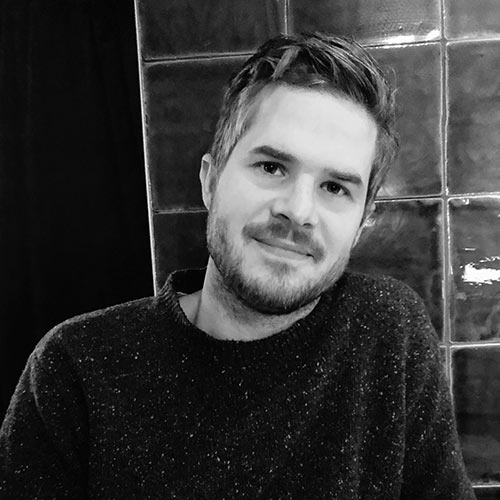
Markus Ahlberg
Head of Sustainable Business Development
Years in Schibsted
3 months
What I’ve missed the most during the Corona crisis
Laughing together with collegues
Blocket helps users repair old things

Blocket helps users repair old things
A third of the Swedish population don’t mend things when they break. A main reason is that they don’t know how.
Now Blocket is helping them out.
The amount of things we throw away every year just keep getting bigger. At the same time we buy more new things than ever before. That’s why Blocket made the book ”Bättre begagnat” – a guide on how to take care of and mend things.
”This is to care for our children’s future”, says Pernilla Nissler, CEO of Blocket.
To previous generations, it was obvious to repair and take care of the things you got. Today, many choose to buy new things instead. Every year people in Sweden throw away some 4.5 million tonnes of waste. When it comes to clothes, the average is 7.5 kilos per person and year. At the same time we buy 12.5 kilos of new clothes per person and year. Our environmental impact is clearly related to how we consume. And considering how much new things we buy per year, a transition to a more sustainable consumption is an important issue for our climate.

A survey conducted by Kantar Sifo shows that a third of Sweden’s population do not mend their things when something breaks (34 percent), and a big reason why is simply because they don’t have the knowledge of how. At the same time, nine out of ten (93 percent) think it is important to know how to mend and care for clothes and things. Many people are also interested in learning more about how to care and repair, especially young people between 18 and 29 years old. These insights made Blocket launch the book ”Bättre begagnat”, a guide on how to take care of and mend things and clothing – to make it possible for more people to extend the life of their belongings.
”The second-hand trade on Blocket saves approximately 730.000 tonnes of CO2 annually, which corresponds to the amount of emissions that all traffic in Stockholm causes for ten months. We hope that the book will help more people to extend the life of their possessions, whether the purpose is to keep them or resell”, says Pernilla Nissler.
”This is one of the most inspiring books we have ever published. from an environmental perspective second-hand is almost always better than new”, says Jeppe Wikström, at the publisher Max Ström.
As a digital extension to the book, Blocket has also recently launched Blocket TV on Youtube, where you can find tangible filmed guides on how to carve together your very own outdoor table, change tires on the bike, draw new electricity in a lamp or learn to sew pillowcases from an old tent.

Tero Marjamäki
Head of communication, Blocket
Years in Schibsted
1,5
What I’ve missed the most during the Corona crisis
My wonderful colleagues
An underdog rethinking distribution

An underdog rethinking distribution
From zero to ten million yearly packages delivered in just five years – the growth for logistics and distributor company Helthjem has been a masterclass in winning the hearts of the Norwegian population and becoming an enabler for sustainable shopping.
There is something quite charming about the challenger. The David to the Goliath, and the story of the small-town boy who won the heart of the princess. Five years ago, start-up Helthjem was ready to disrupt the market and change the landscape for package delivery in Norway, going head to head against a giant with a near monopoly in the market for hundreds of years. Not an easy feat, but certainly not impossible.
Anders Lunde Angen, CEO – and the very first employee – of Helthjem Netthandel, was not intimidated by the challenges ahead. On the contrary, he was absolutely convinced that the start-up could make a difference in the market.
”The idea to utilize the capacity within the already existing newspaper delivery chain was brilliant, and I could see how this could potentially revolutionize the way we send and receive packages with regards to speed and frequency of delivery. My main driving force though was the way I could see this making life easier for everyday people”, he says.
The woman who hired Lunde Angen to do the job, CEO of Schibsted Distribution Cathrine Laksfoss, is very happy with Lunde Angen and his team’s unfailing enthusiasm and continuous hard work to make Helthjem the success it is today.
”To watch him and the team fine tune and further develop Helthjem and its services has been absolutely amazing – and their collaboration with the distribution has definitely been a key to the success for the whole distribution network”, Cathrine says.
From zero to ten million packages
And it seems both the market and the consumers are just as convinced by the Helthjem team’s efforts as Cathrine Laksfoss. A growth from zero to ten million packages sent per year in only five years is a solid testimony that the parcel service is a more than welcome player on the field. Helthjem has certainly become a competitor to be reckoned with. They were first in the market with home-to-home delivery and return from your own door, and the contactless home delivery has been well received.
Helthjem is a part of Scandinavia’s largest media companies, Schibsted, Amedia and Polaris. The distribution network has over 250 years of delivery experience from newspapers such as VG and Aftenposten, so it’s safe to say the newcomer had a solid history on which to lean. When newspaper subscriptions went down, there was available capacity in the distribution network, so it made perfect sense to benefit from the well-functioning machinery. Lunde Angen saw the nationwide and efficient newspaper distribution as an excellent starting point for services that require fast delivery to the consumer’s doorstep delivered contactless before breakfast.

”Today’s consumers expect more from businesses to make their lives easier and more streamlined, and quite rightly so. Why should you be forced to queue up in a crowded post office to pick up a package, or get home delivery according to a time schedule that may or may not suit you? It’s just not good enough”, he says.
There is no doubt that the business idea was good. In the five years Helthjem has been operative, several of the competitors have been forced to step up their game – so what was perhaps thought to be yet another insignificant start-up is now considered an actual opponent. It’s healthy for the industry and definitely a benefit for the customers.
Lack of innovation
Listening to your customers and meeting their needs should be at the core of any business, but surprisingly this has not always been the case within the logistics industry. The pace of innovation has been low and the consumers were for a long time left with a parcel delivery model that suited the logistics companies better than it suited them. In a time when flexibility is perhaps the most important selling point for consumers, it is no wonder that inflexible parcel delivery was no longer good enough. The power now lies in the hands of the customer.
Chief Sales Officer for Helthjem, Daniel Kongstvedt, highlights the flexibility of their delivery service as one of the most important reasons for the company’s success.
”We aim to have the fastest and smoothest service on the market, and our customers have really embraced the possibility of not only receiving packages on their doorstep, but also sending parcels from home. This flexibility is absolutely crucial when today’s customers choose how to send and receive packages”, Kongstvedt says.
You don’t have to be at home for a given period of time when the package is to be picked up or delivered by Helthjem. In fact, you don’t have to be at home at all
There is no denying that online shopping is the way forward for most retailers. Pre-corona, numbers showed that 80 percent of Norwegians between 16 and 79 had purchased goods online in the last twelve months, and the total consumption for e-commerce hovered around 170 billion NOK annually. It’s safe to assume the numbers will be significantly higher going forward, meaning the number of parcels passing through the Helthjem delivery chain will most certainly increase. In 2020, it is expected that over 85 million packages will be bought online in Norway, almost three times as many as last year. Kongstvedt is confident the customers will appreciate Helthjem and their speedy and smooth delivery service.
”Unlike how other companies operate, you don’t have to be at home for a given period of time when the package is to be picked up or delivered by Helthjem. In fact, you don’t have to be at home at all. We also deliver on Saturdays, which is a real luxury in a country where the postal service continues to scale down the number of delivery days”, he says.
Helthjem is a delivery partner of some of Norway’s leading online retailers. Every single day, protein supplements, the season’s coolest sneakers, syllabus literature, bootcut jeans, designer coat hangers and every other imaginable type of goods make their way from retailers’ warehouses – landing on the doorsteps of happy customers throughout Norway.
Promote sustainable consumption
Apart from delivering parcels containing brand new merchandise from top retailers, Helthjem also offers their customers both pickup and delivery of customer-to-customer sent packages from their home. The service has proven to be very popular, not least among fans of vintage shopping across the country. The growing interest in sustainable consumption has given rise to a boom in the market for buying second-hand goods, many of which are being carefully packed up and sent via Helthjem. Anders Lunde Angen is proud to work in a company that plays a part in an important movement for sustainability.
”Through platforms like Tise and Finn, people are given the opportunity to not only save money by buying second-hand items. They are also contributing to reducing carbon emissions by choosing pre-loved clothes, shoes and household goods. When you add a pre-existing distribution channel and smart transportation to the mix, it really adds up to a win-win situation, he says.
Surveys also show that users of Helthjem are selling items they would otherwise have thrown out, making Helthjem an even larger contributor to a sustainable lifestyle.
The effect of convenience has boosted the category even more than we dared hope
”We knew from the start that second-hand goods would be an important category for the service, but the effect of convenience has boosted the category even more than we dared hope”, says Director of Business Development and Innovation at Helthjem, Tor Even Blom-Ramberg.
Helthjem is conscious of their positive impact, but they still have ambitious goals when it comes to sustainability.
”While we enable sustainable e-commerce, the parcel journey is still not eco-friendly enough. That’s why an important part of our product development and goals for the future include skewing our delivery in an even more sustainable direction, for example using electric cars. It’s a journey to get there, but we are so proud of how far we’ve come, and truly motivated to keep going, Talseth says.
Through lockdown and quarantine in connection with Covid-19, Helthjem has been a lifesaver for many who have been bundled up at home for longer periods. Gym equipment, home office supplies and a new shirt to look good on your Teams-meeting with colleagues – Helthjem has made sure your online purchases have landed safely on your doorstep. Without having to interact with anyone or leaving your house.
”We’re very proud to have played an important part of making home life as comfortable as possible during difficult times. For me, it is just another testimony to the important role Helthjem is filling, both now and in the future”, says CEO Anders Lunde.

Marius Husebø-Evensen
Chief Communication Officer in Helthjem
Years in Schibsted
3
What I’ve missed the most during the Corona crisis
Visiting friends and family who are in the risk group
Meet our People in People

Meet our People
She makes Schibsted’s voice heard
Petra Wikström is part of building future digital markets. She’s director of Public Policy in Schibsted, and she and her team are constantly working to make Schibsted’s voice heard when it comes to regulations and political decisions.
”We’re talking to decision makers, members of parliament and officials in Sweden, Norway and not least in Brussels.”
In many areas this is about trying to secure that all actors in a market have the same opportunities and play by the same conditions. Lately the focus has been on Amazon, which is entering Sweden.
”The big question in the Nordics is what the future market of distribution will look like. Amazon is a dominant player and we understand that they will use Postnord’s delivery service – do the politicians think this is okay?”
The question is interesting to Schibsted which is already in the distribution business in Norway and is looking into it in Sweden. An even more important question is how Apple is challenging media companies, by keeping 30 percent of revenues from app sales in Appstore and not sharing user data.
The key to making yourself heard in issues like these, Petra explains, is to have concrete suggestions – and a good network. With many years in Brussels she knows how this all works and how Schibsted can be a leading voice in its market. ”The stakeholders need people they can trust and listen to, who have useful input. Schibsted is quite unique with all our different companies and different experiences.” Most challenging are the long processes. Most decisions take five years to reach. ”But on the other hand it’s super exciting and it’s nice to be able to lift Schibsted’s role, that makes me proud.
Petra Wikström
Director of Public Policy
Years in Schibsted: 2
What I have missed the most during Corona crises: Travelling, cultural happenings and meeting people at larger events.
Employees support sustainability
When Niklas Hermansson saw the information on Schibsted’s intranet about the sustainability change-makers program, he immediately knew he wanted to apply. Before joining Schibsted he used to work with renewable energy, so sustainability has been an important area for a long time.
”The program sounded very exciting and my ambition is that it will support me in working with these aspects in Prisjakt”, he says.
The program consists of an online education at Cambridge University. And then the change-makers get assigned to work on projects within Schibsted. Niklas is looking into how Lendo can measure its impact on society – what good they contribute with and which risks are involved.
”It’s super exciting to work with the other change-makers across Schibsted, we all have different competences and backgrounds.” The program has opened his eyes. ”To me it’s become obvious how sustainability is about so much more than the environment. It’s about societal impact, equality, how we can work smarter – the perspective is broad.”
Niklas Hermansson
CFO at Prisjakt Group
Years in Schibsted: 1
What I have missed the most during the Corona crisis: Having a coffee and chat about life with my grandmother.
Students connect with Schibsted
During the autumn, students from universities in Norway and Sweden have been able to sign up for the Schibsted Connect program – where they are matched with a Schibsted buddy to share knowledge and experiences.
Kamilla Abrahamsen from Schibsted’s talent acquisition team is excited that this second round has attracted so many applicants.
”We will match some 30, 40 buddy-couples who will meet once a month.”
The idea is a win-win situation where both the student and the Schibsted employee will learn and develop. The students will get insights into Schibsted and work-life and their Schibsted buddy will learn about younger generations habits – and how they experience Schibsted products. Kamilla explains that the students are eager to learn more about Schibsted – they are often not aware of all options within the family. They might know that Schibsted invest in start-ups, but not that innovation is happening in all parts. ”To many students, having a role model from work life is a great thing. And our Schibsted people can be really proud to be ambassadors.”
Kamilla Abrahamsen
Employer branding coordinator
Years in Schibsted: 3
What I have missed the most during the Corona crisis: Hugs!
We love local
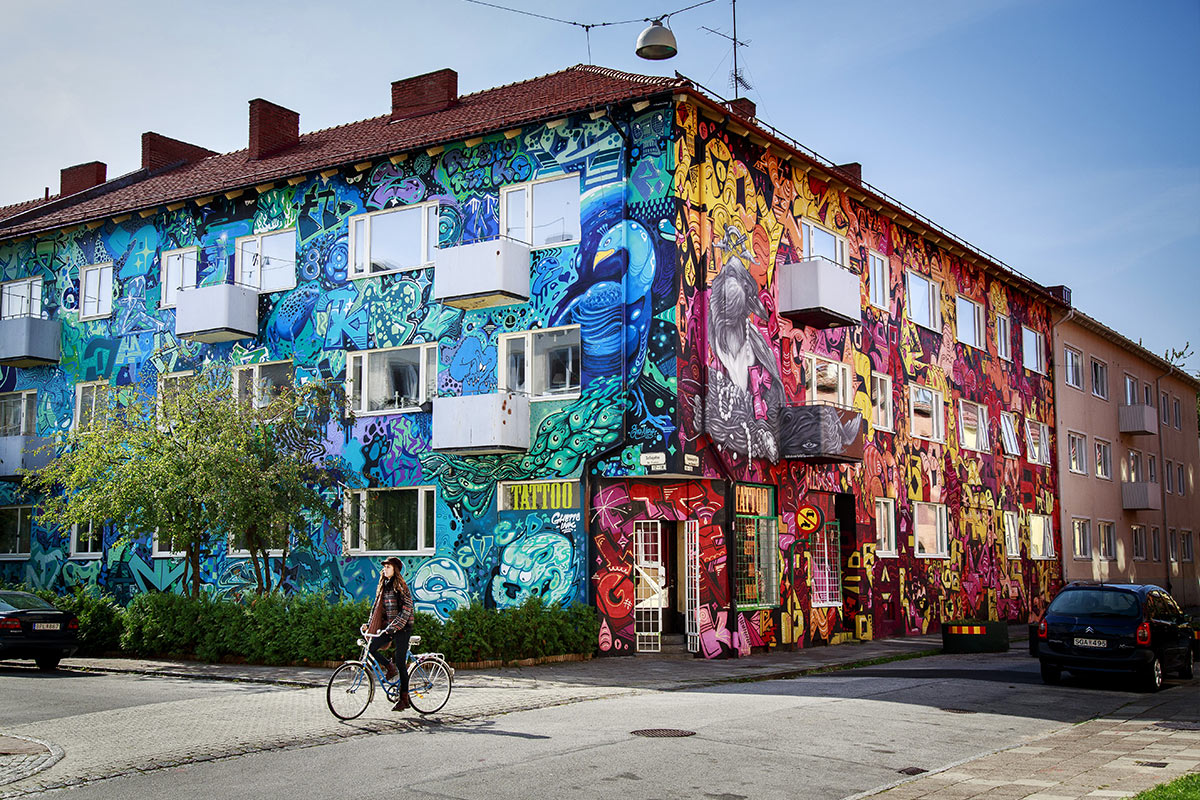
We love local
Schibsted’s newspaper Aftonbladet is expanding its local journalism, beginning in Malmö in southern Sweden, in spite of previous failures in the field. But the right time may be now, mainly because of a new, scalable technique.
I was 16 years old when I for the first time walked into the editorial office of the local newspaper Folkbladet in Idrottsgatan in the town of Norrköping. I had got myself an internship at the paper that was to become one of my much-frequented places during high school. I forced my friends to appear in my own Youth spread every Tuesday. I interviewed them and their buddies about their first love, about being a lesbian in the small town of Valdemarsvik and about anorexia. My whole world was concluded on a two-page spread every week. Sometimes we hung around after work smoking in the basement waiting for the first printed copies. Yes, the printing machine was just two stairs down from the editorial office.
Local is near. It is journalism about bumps in the road, it is about the local football team and about bands playing in basements, letter to the editor and death announcements, but also investigative reporting about the petty wangling and greediness among local politicians.
More important than ever
Local is more important than ever for journalism. In the age of Trump, fake news, Cambridge Analytica and Facebook, journalism is one of the few means at hand to rebuild trust, to get closer to the reader. Stockholm knows precious little about Malmö. People in Malmö know that. Here we need to shorten the distance between towns and City and perhaps sometimes between small town and town. It depends a bit on how far the technology can take us.
The campaign in Malmö consists of local voices, local front pages and reporters in place – all of it in order to give people in Malmö a better offer. But the editorial staff is also helped a lot by new tech, not least in the form of robots writing about traffic, real estate and local football.
Our ad offices are prepared to take on the American giants in the fight for the local money.
When I moved to Stockholm and a temporary summer job at Svenska Dagbladet I had been at several local newspaper branches. But the one that left the biggest mark in me was the sister paper of Folkbladet, called Östgöten where I worked when I was a student. As a young journalist with a “calling” I learnt that the journalism was depending on revenues even though the journalism must be independent I was there the day the last issue of Östgöten was published and had a funeral beer surrounded by men in tears. The paper had existed in Linköping since 1873 and Rolle in the reception knew half the people in town. Today Folkbladet has moved away from Idrottsgatan. It is nowadays owned by the competition, the paper NT, and the two groups of journalists share the canteen.
Local is expensive. It is not difficult to start a local paper. The difficulty is to assure that the costs aren’t growing too big. Still harder to make it profitable. But now there are three main reasons for Aftonbladet’s chances to succeed to be good: users want local content; technology makes the venture possible; there is money to collect.
Indeed, the fact that the users want the content is nothing new. During my whole life as a journalist, the readers have said that they were interested in local news. The question is how much they are prepared to pay for it. Local papers are putting vast resources into digital subscriptions giving readers access to the full content, a business model that is probably right for them because their users are accustomed to paying for the paper and it is hard for these local papers to finance their content with advertisements since they cannot really offer the digital reach.
Aftonbladet is recommending that one charges for journalism but there is still a group that is expecting free news and currently choose to get their updates elsewhere. The growing American giants are an apparent alternative, but this is where Aftonbladet has a role to play. Aftonbladet shall update Sweden and our business model (Freemium) is updating news for free online, while charging for the in-depth features. Our local offer means that our readers can easily, and without paying, access our local content. We are not building any separate app, we are not building a new brand. Instead, we ask our 3.9 million unique daily readers if they also want to have an update about what is happening in their community.
The technology can be used in every city
Technology is an important prerequisite for our campaign, but development has a high cost as well. Luckily, the highest costs arise in the beginning, because the same tech that has been built for our upstart town Malmö can be used for every place in Sweden and it takes only one day to implement. The same goes for our robots. They are already trained. We only have to connect more APIs for them to start writing about places like Kiruna, Uppsala and Västerås. Our campaign can only be worthwhile if it can be scaled up to other places.
Tech has also given us advantages in other fields. A new tag structure affects not only how we can trace and structure old articles for local use, it can also enable our drive to have more niche material. It also gives us new possibilities for automatic updating of articles.
Businesswise, the local ad market is big game. The local papers cannot any longer offer the advertisers enough reach, neither in print nor online. A digital enterprise such as Aftonbladet with its wide reach has reach to offer. So can Facebook and Google but we claim with vigor that we have a better contextual environment and that this will be increasingly important ahead. Furthermore, we already have 12 local advertising offices all around Sweden. They are prepared to take on the American giants in the fight for the local money. It is primarily in the towns, where we have established a local sales organization, that it is of interest for Aftonbladet to invest.
At the same time, we do not only see a traditional advertisement deal. We are hoping for a large part of the revenues to be converting deals where we send valuable traffic to other local companies and services. Here, we already work with Schibsted’s Growth Unit that is offering the users smart digital services. Through Aftonbladet the readers can receive relevant content together with local offers. So far, we have integrated Klart.se and Let’s deal. Next in line are Blocket job, Yepster and Mötesplatsen. If we can create a good content and a good user experience we believe that the chances – and we learn a lot during the journey.
Thanks’ to new tech, it has never before been so easy as now for a national paper to expand its local journalistic coverage. There has never been such strong demand from the market. And maybe it has never been this important to get closer to one’s readers. Knowing this, Aftonbladet is going in for local, starting in Malmö.
It was simply too important to not dare testing. Again.

Lotta Folcker
Managing Editor, Aftonbladet Labs
Years in Schibsted
5
My dream job as a child
Punk rocker and farmer
Journalism in the age of rage

Journalism in the age of rage
The disruption of media business has fundamentally changed and challenged journalism. Karin Pettersson, Director of Public Policy at Schibsted, lists five lessons you need to learn as a journalist today.
The news media industry has long lamented the broken business models that followed the digital revolution. Today, 70 percent of the digital advertising money goes to Facebook and Google and media companies are struggling to reinvent themselves through digital subscriptions. But the disruption hasn’t only affected advertising. It has also, fundamentally, changed and challenged journalism itself.
Historically, journalism has played a central role in shaping public discourse. News organizations have served as gatekeepers and chosen what to amplify. They have always been good at catching the audience’s attention and driving engagement. It has, however, also been about ethics and purpose. But the new public sphere has a different logic than the old. Today, journalism is just one of many actors providing information on what is going on in the world and exists as one of many providers of content in an ecosystem where lies travel faster than the truth and that is optimizing for anger, fear and strong emotions.
In this new world, journalism needs to change, and journalists need to learn about the landscape and avoid the pitfalls. If we don’t, journalism risks becoming a mirror to the anger-driven social media logic – instead of a counterweight on the side of truth and reason.
Given these new challenges, here are five lessons for journalism in the age of rage:
1. Don’t get your news, angles or sources from Twitter
Twitter is, compared to the bigger social media platforms, a small shop. But in the news ecosystem it is hugely important, and unfortunately often in a destructive way. Journalists, politicians and pundits are overrepresented on the platform, and so are propagandists and manipulators. Still, many journalists still spend a disproportionate amount of time on Twitter, looking for angles and topics. Since the platform is easy to manipulate for anyone with access to money or a network of bots, this makes them easy targets for manipulation.
Twitter also distorts journalism in more subtle ways. Journalists love engagement. Due to the nature of the platform, the content that journalists get the strongest reactions to on Twitter tends to be variations on the big topic of the day – the stories that everyone already is covering. When journalists spend too much time on Twitter, this can lead to a dumbing down of coverage in a time when what we need is independent, thoughtful journalism looking for the untold stories.
2. Don’t be a useful idiot
The tools of social media were built to connect people and give them tools for expression. It was never the plan, as American tech journalist and thinker danah boyd writes; that these “tools of amplification would be weaponized to radicalize people towards extremism, gaslight publics, or serve as vehicles of cruel harassment”.
That is, however, what has happened. The hard part for journalists, is how to learn to avoid to become useful idiots playing into the hands of those using the platforms to amplify their agenda. To do that, journalists need to understand how manipulation works on social media.
danah boyd uses the example of the anti-Islam pastor Terry Jones, who in 2010 began using social media to publicly threaten to burn the Quran. His goal was to attract the attention of mainstream news media to promote his congregation, which had around 50 members. Finally, a network of bloggers started to write about him, and finally Secretary of State Hillary Clinton issued a statement condemning him, which led to a massive media coverage. When he finally burned the Quran, the event was covered by every news outlet. The incident led to riots in Afghanistan, resulting in the death of 12 persons.
The question is: was it necessary and important to cover this spectacle? Should the media report on racist provocations from marginal political figures?
3. Political attacks vs relevant media critique
The architecture of the new public sphere makes life harder for journalists. But is also makes their job more important than before. It’s harder, because they can’t single-handedly set the agenda. But also because the undermining of journalism is a central part of the political program of many right-wing populist parties currently on the rise.
The attacks on journalism from Donald Trump in the US, Rodrigo Duterte in the Philippines and Victor Orbán in Hungary are not isolated events. They are part of pattern. The undermining of the free press is at the center of the political agenda for authoritarians across the globe. It is a difficult balancing act, to on the one hand be aware of the fact that journalism is under attack – and at the same time stay open to justified criticism.
4. Better coverage of big tech
The rise of big tech is one of the most important stories of our generation. Facebook has over 2.3 billion monthly users and YouTube last year had 1.8 billion logged on. The majority of Americans get their news from social media and the same is true of most European countries. Never in the history of humankind have companies existed with such reach and impact on information and human communication. These new global superpowers need to be scrutinized and reported on, not only from the “tech” angle. Their operations affect democracy, innovation, politics, and the coverage needs to reflect that.
5. Get used to the hatred
Journalists that learned the trade in the old days are not used to the hatred, criticism, threats and aggression directed towards them that flourish on social media and elsewhere today. Since a large part of the attacks are politically motivated, it is unrealistic to believe that they will simply go away. Instead, journalism needs to learn how to thrive and stay focused in this new environment. Individually, journalists need to find the strength and the motivation to go on, without retreating or becoming overly defensive. On an organizational level, editors and need to learn how to deal with the stress and psychological pressure that follows, and media organizations should set up smart and efficient security routines for their employees if they haven’t already. At the end of the day, the attacks are, in a way, a testimony to the importance of the work journalists are doing. (I don’t know how much that helps, though.)
Good journalism has never been as important as now, and never as hard. Journalism can and will survive. But it needs to learn how navigate in a new environment.

Karin Pettersson
Director of Public Policy
Years in Schibsted
9
My dream job as a child
Librarian
Rethinking organizations

Rethinking organizations
Leave the old hierarchical organization behind! It’s time to create workplaces for the future – to enable innovation.
Just like business models, organizations need to disrupt themselves to be sustainable in a world of hypercompetition and constant change. Future proof organizations transform from hierarchical constructs into open, interconnected networks populated by a fluid workforce and values of transparency and immediacy, just like the world-wide web. This is how organizations will foster an innovative culture for the new generations.
Innovation is the fuel for renewal and the key to reinvent and sustain ourselves. To succeed in the future, organizations must regard change and innovation as their core activities. Those who will be most successful at that, will be the winners. Yet, cracking the innovation code is not easy. “Humans are creative. Organizations are (mostly) not,” says Gary Hamel, one of the world’s most influential and iconoclastic business thinkers. He refers to studies by McKinsey & Co where 94 percent of executives argue that although innovation is hugely important, their organizations are not good at it. Why?
Hamel and many other leading strategists, argue that we are stuck in old traditional thinking when it comes to the organization. The “organization” as a construct has been unchanged for nearly 200 years, since the industrial revolution and was crafted by people living in the mid 19th century. It was designed for control purposes, to create efficiencies and effectiveness in a completely different competitive landscape when skill sets were totally different. Paradoxically, we can argue that organizations are failing to innovate because we are failing to innovate the innovative organization which is fit for the future. To understand what lies ahead – let’s take a look at some workforce trends facing us.
Millennials taking over
We know that millennials soon will represent 50 percent of the workforce and that the millennial generation differs from Baby boomers and Gen X in several ways that will alter how people work. We know that millennials want flexible, short-term project based, impactful work that promotes learning and variation. Millennials are purpose-driven, multi-tasking digital natives, but also self-centered, easily bored and disloyal employees.
Millennials want to work in self- organizing teams where they have a true impact on a cause that is meaningful to them. Their leaders need to be meaning-makers and give them autonomy. They want to learn continuously in the flow of life. They want constant feedback, reward for performance and to frequently change projects and roles.
In their urge to learn, an increasing number of workers are no longer climbing the corporate ladder but rather choosing to change employers or even careers every few years. In a world of shortage of talent, why hang around? A US-based study indicates that the millennial generation is likely to have twice the number of jobs throughout their careers compared to their previous generation. Those younger than 34 years of age, said job-hopping would actually help their careers.
Rethinking the management playbook
Traditional management principles aimed at maintaining control and create efficiencies typically were established with the perspective of the organization as a hierarchy, meaning a system in which members of an organization are ranked according to relative status or authority. In other words, a system to effectively organize a command-and-control regime. It typically involved management control practices like division of labor, talent specialization, standardization, formalization, role descriptions, annual appraisals and systems thinking in reward practices. And yes, although these practices do support the creation of efficiencies – they are readily blockages to agility and thus innovation.
Take the annual appraisal. Many a research have concluded that this exercise is out of date, as it has minimal or no impact on performance, engagement nor growth for the individual being appraised. In our era, employees need and want instant and continuous feedback. In future oriented organizations, leaders have regular check-ins with their employees where the focus is forward looking and focused on learning and development, not looking backward on past performance. In future oriented organizations, performance management is meant to foster positive emotions for the future: personal visions and dreams. Career planning in the future will be focused on learning and flexibility for the individual. Reward will move from systems and rule based thinking to a mechanism that reinforce learning and development. Reward will become growth oriented, individualized and transparent.
Leadership as a Service
Leaders need to be meaning makers in a world driven by purpose and meaning. “Servant leadership” may well be the new paradigm. The philosophy is based on sharing of power. The leader is there to serve the employees (rather than the opposite), to put the needs of the employees before anything else (even the customers) to help them grow, learn and perform at their best. The servant leader’s main focus is the growth of his or her people. Through growth of employees, the company also grows. HCL Technologies, an Indian fast-growing tech company with 8 bn USD annual revenue and 137.000 employees across 44 countries, is practicing the philosophy. HCL is driven by Ideapreneurship. An ideapreneur has the licence to ideate and they describe their culture as a “grassroot movement that has rallied the whole organization” behind their innovation agenda.
Self organizing teams
Self-organizing teams are key to develop agile organizations. A self organizing team doesn’t have to wait for a manager: they assign their tasks and how to work to themselves. They take accountability for their work. For such teams to truly succeed, some principles must be in place like rules for teamwork, required skill set, competency development, commitment to deliver, trust and respect. Unfortunately, I have seen many enthusiastic self-organizing teams that have failed because leaders (including myself) have underestimated the necessity for good coaching and investment in training needed for the teams to succeed.
Diversity and Inclusion needed!
Diversity entails much more than the dimension of gender. There are diversities in terms of age, sexual orientation, education, ethnicity, religion, national origin and in terms of personalities, emotions, thought patterns, behaviors. As our world and our competitive landscape becomes more complex and diverse, so must we as organizations if we are to keep up with the world around us and be able to understand and deliver what it wants from us. Diversity in the workplace gives us the opportunity for new perspectives, increased creativity and more innovation. In the future organization, diversity and inclusion are part of the DNA of sustainable companies.
The future of work is humanistic and purpose-driven
Hamel argues that it is time for us to create organizations that are fit for human beings of our time. In HR communities we talk about the emerging “social enterprise” which requires nothing short of full-scale reinvention. Future organizations must put humans at the center of their business strategies and bring meaning back to the workplace – that’s how the organization will thrive and sustain through innovation and growth.

Mette Krogsrud
EVP People & Corporate Affairs
Years in Schibsted
6
My dream job as a child
Air hostess
Meet our people
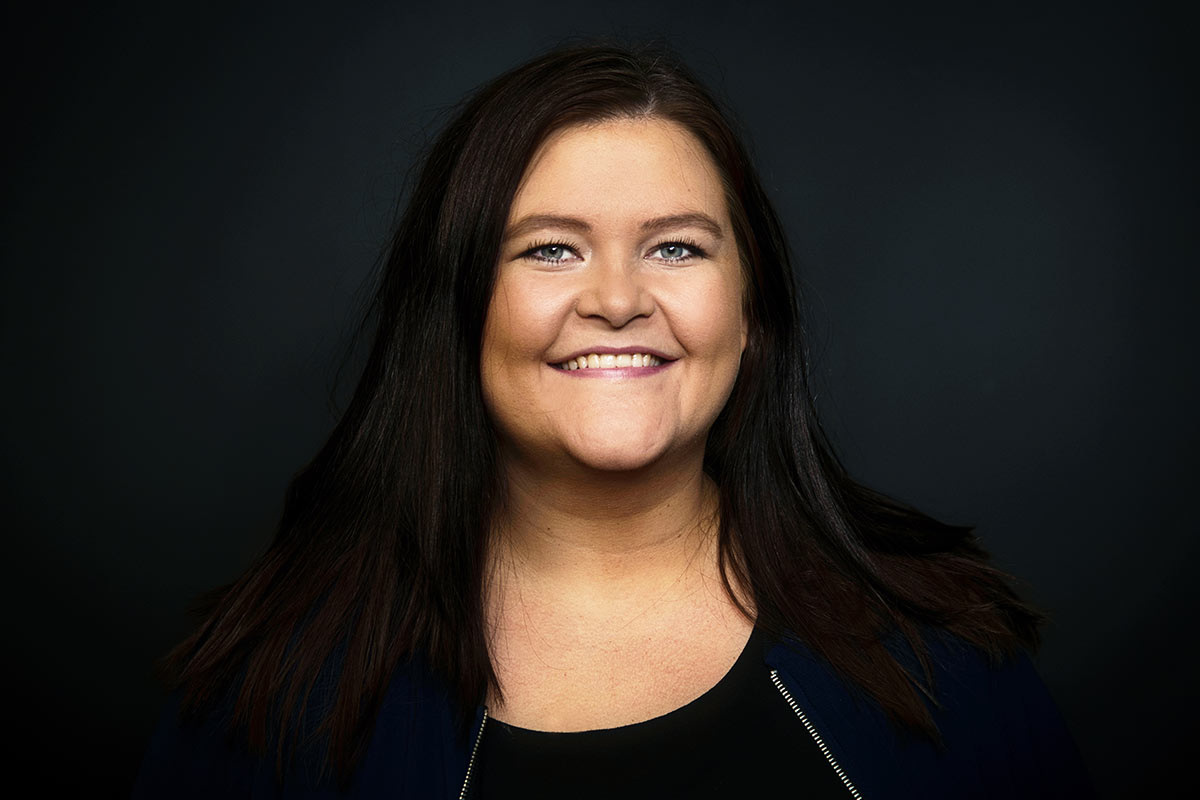
Meet our people
Camilla Brække is bringing Verdens Gang out in the public space, working with voice and visuals. Meet her, Fredrik Hammarstedt, Ida Nilsson and Martine Stolp – some of our Schibsted people.
What if you could get news from VG on screens in the subway or in the bus stand? Camilla Brække is head of a project for sound and visuals that’s looking into how to make VG more present in the public space. But it all started indoors.
“We were eager to provide news for Google Home Assistant, but soon realized that the audience is still very small in Norway. That’s when we changed focus and started working on a product that works on several platforms,” says Camilla.
Basically, her team is making daily video news broadcasts in a simple format that can be produced by just one person. There’s a camera at the VG news desk and a VJ can just start recording at any time.
The content has also changed as the project has moved forward. In the beginning they focused a lot on always being first to report, but then ended up with a lot of text on still pictures. Now they’re trying to simplify angles and messages to adapt to the format and the concept.
“We have a new type of infographic that is much more to the point. If we want to catch people’s attention out in the city, we need to be very direct,” Camilla explains.
At the moment the team is trying out the product on VG’s start page and soon it will be on Snapchat. But the overall goal is to move out into the city. When becoming more and more digital, newspapers like VG have lost presence outdoors, losing attention for their brands. This could now be about to change, with VG’s news displayed at train stations, airports and out in the city.
Camilla has enjoyed how the project has developed – from starting out with this one idea of content for Google Home to becoming something completely different and larger. “It is also very fun to focus on the visuals – and not least to be allowed to be a bit playful.”

Years in Schibsted: 1.5 My dream job as a child: Truck driver
Cooperation is key in the office
One morning when Fredrik Hammarstedt worked as facility manager at Telenor’s office in Stockholm, he sat opposite a man he had never seen in the subway. Not unusual you might argue. But when they both left the train at Slussen, it turns out they worked in the same office and had done so for years.
“The main reason why we have an office at all is to meet our colleagues. If you do so naturally on a day to day basis, the thresholds are a lot lower the day you’re going to collaborate,” says Fredrik.
He now has the same job at Schibsted in Stockholm. Fredrik believes that you need to look at offices in a holistic way. Starting with those basic questions about why we even have an office and how you create one that people really want to go to every morning. Collaboration is a keyword – as is culture, being agile and of course technology that enables you to do your work. One thing was very important to Fredrik to implement when he began.
“You need a human touch and a management system with a heart.
Filling out a form is not enough. That’s why we have floor managers who very quickly can assist the different needs from our different companies with a human touch.”

Years in Schibsted: 1.5 My dream job as a child: Hairdresser
“It’s important to teach kids about tech”
One week last June, the atmosphere in the Schibsted offices in Stockholm and Oslo changed completely – kids aged 8–12 years invaded the buildings. Kids Coding Camp is introducing kids to tech and coding and is arranged by the Talent Acquisition team at Schibsted. The concept was first arranged by Finn and now Schibsted is copying it with pride.
“I feel as if I have the world’s greatest job when working on this. It’s important to teach kids about tech – and not least to make girls see that it’s fun,” says Ida Nilsson, employer branding specialist and responsible for the project.
The kids work in a program called Scratch – which is a tool developed for children – and their teachers are students from KTH (the Royal Institute of Technology). On examination day they had created games, quiz, animations and much more.
“Already on the second day when I was hanging around and someone asked if I could help – I didn’t have a clue,” confesses Ida.
On this first camp, children of Schibsted employees were invited. Next time, in February 2020, it will grow to an external integration

Years in Schibsted: 6 My dream job as a child: An actress or
TV host on children’s television
Events that build loyalty
In a time when journalism needs new ways both of earning money and of building loyalty, the Norwegian newspaper Aftenposten is hosting events that reflect the editorial content. Martine Stolp is a producer for Aftenposten Event, and she is bringing the journalism out on stage.
“Our job is to help making sure that the readers Aftenposten have today stay on, recruit new readers and to raise turnover,” Martine explains.
Climate, tech, culture and news are the main themes. In December 2019 Aftenposten arranged a conference named ”Rethinking”, together with Schibsted. Famous guests like tech futurist Amy Webb and Alex Stamos, computer scientist and former Security officer at Facebook attended (read interviews with them on pages 10 and 15).
“I’m learning a lot from arranging these events – both in working with the editorial room and the expert speakers.”
Martine’s team will also arrange a sports event together with VG and they have developed masterclasses for Aftenposten for education on writing, presenting and podcasting.
“I think we could do even more on these themes across the whole of Schibsted, we have the skills,” says Martine.
An idea that started a movement

An idea that started a movement
A digitized bullet board changed our shopping habits for ever – and started a movement for a more sustainable society. Today Blocket has five million visits every week and sister sites all over the world.
1996. Henrik Nordström, born and raised in the small town of Fjälkinge, Skåne, stands in front of the bulletin board in the local ICA grocery store. He finds himself drawn to the small notes pinned up on the board. This is where people from all over town try to advertise things they no longer use. They write a description on a piece of paper, rip it off and pin it up on the bulletin board and hope for by-passers to see it. But this is a rather tedious process, in fact unnecessarily so. This is where Henrik is hit by an idea – the bulletin board should be digitized!
But the road between the physical and the digital world was longer in those days. This was two years before Google’s search engine was developed, Ebay had just launched in a small scale the year before. The Swedish government was about to be digitized and Facebook wasn’t even thought of. The few people who used Internet at the time connected via modem and broadband was not invented yet. Html, the language used to construct websites, was only a few years old and many thought Internet was just a passing trend. But some people believed in the new technology, and that it was going to do great things and change lives. Henrik Nordström was one of those.
Quickly after getting the idea of a digitized bulletin board Henrik started coding and only a few weeks later he launched the first version of Blocket.se. The services was solely aimed for people in the Skåne area. The layout of the site was striped to look like the inside of a notebook.
Blocket’s concept is spread all over the world
At the end of 1997 Blocket was being used by Swedes all around the country. Six years later, 2003, Schibsted acquired the company.
Since then, Blocket has grown immensely. At the year of its launch there were two employees and a revenue of 34 million kronor. By 2018 revenues had increased to 988 million and almost 250 employees. Different versions of Blocket are now available in a lot of countries and 8 out of 10 Swedes has bought or sold something at Blocket in Sweden. Amongst families with children, more than 90 percent has used Blocket. On an average week there are five million visitors on site. Basically every Swede knows about Blocket (98 percent) and few Swedish sites have a bigger impact. On an average day you can browse through 600 000 ads. 10 percent of these ads are marked sold within an hour, 25 percent within a day and 60 percent within a week. The combined worth of all things for sale at Blocket during 2018 was 714 million kronor which corresponds to about 15 percent of Sweden’s GDP. Progress has been fast. Blocket has grown and the interest for secondhand trade has increased rapidly.
Blocket was pioneering at its time and has made imprints on several countries, but is more important now than ever before. We need to adapt to a more sustainable culture of consumption. What Henrik Nordström founded was not only a marketplace on the Internet, it was something bigger.
Above all, it is the financial incentives that has pushed the Swedes to buy and sell secondhand, but lately there is a new factor that has grown in importance – the environment. A survey by Ipsos in 2009 showed that 24 percent of all Swedes think that one of the reasons to buy and sell used things is to be environmentally friendly. Five years later that number had increased to 42 percent. More than every other participant also said that their interest to buy secondhand had increased the last three years. Two out of three Swedes state that they sell things they don’t use mostly because they want them to be recycled. These are clear signs of people wanting to distance themselves from overconsumption.
Circular economy has gained ground
“More and more people are discovering how easy it is to buy and sell used objects and more and more people see the value in buying things that are recycled and that lasts over a long period of time,” says Pernilla Nissler, CEO at Blocket.
One factor that has been pushing the secondhand trend is the fact that climate change and the issues that follows have shown that the current economic culture, in which we constantly buy and produce new things, is unsustainable. Therefore circular economy has gained ground. The idea behind is to use resources in the best possible way, instead of wasting them.
“We have grown accustomed to buying new things. Take Christmas shopping for example, where our consumption hits new records every year. We must change our habits and the way we look at secondhand trade and ownership. Instead of being the final destination for our things we must start viewing ourselves as part of a cycle,” says Pernilla Nissler.
Hopefully this green trend will become even stronger within future generations. The Swedes’ engagement in secondhand trade has already shown results. Every year, we prevent 0.8 million tonnes of GHG emissions because of second-hand trading via Blocket. That effect is as if all the traffic in Stockholm would be at a standstill for a year.
Blocket as a company does its utmost to be environmentally aware and to put the climate first. This involves environment policies, climate compensation and establishing demands towards suppliers, but also a consistency when developing new services. This fall Blocket will launch a new site to get the already many customers to continue to buy and sell used, but also to get new customers to discover the benefits of recycling.
“It has been a lot of hard work. Our 250 employees never stop improving our product, working every day to make the secondhand trade as easy, effective and safe as possible, so that more people can discover the benefits of recycling. It has been an amazing ride for Blocket, and we have only just begun”, says Pernilla Nissler.
Blocket numbers
- 23 – that is how many years Blocket has existed, founded in 1996.
- 5 millions – the amount of weekly visitors.
- 98 – the percentage of the Swedish population that knows of Blocket.
- 1/4 of everything that is advertised on Blocket is sold within a day.
- 250 – employees at Blocket.
- 714 billion kronor – the total worth of alla ads on Blocket during 2018.
- 0,8 million – the amount of GHG emissions Sweden prevents by shopping second-hand at Blocket.

Tero Marjamäki
Acting Head of PR & Editorial, Blocket
Years in Schibsted
0.5
My dream job as a child
Florist
Generation Z is leading the change

Generation Z is leading the change
The clothing industry is on the move! From focusing on environmental impact by cars, plastic in oceans and flying everyone now seem to be talking about the impact of apparels and clothes.
Part of me says, “It’s about time!” but the other part says, “Slow your roll!”
Like all major shifts in opinions, it starts with awareness and with people trying to understand what you can do as an individual and society. Then it changes to action over time. The mainstream adoption takes time, and this category is just getting started. Let’s take a closer look at what it is about.
In this year’s survey for Schibsted Future Report we have investigated the interest among Swedes in three different generations in changing wardrobe habits. The result shows that the concern of the environmental impact of apparels and the clothing industry is developing. From being about an industry pumping out collections to fashion-interested consumers, we now see a shift where the consumer has an increased interest in buying secondhand, in mending and re-designing clothes. There is also a clear difference between the millennials and generation Z, where the generation Z to greater extent prefer secondhand clothes over new clothes.
Adopting new behavior fast
20 percent of generation Z say that they prefer secondhand clothes, compared to 6 percent among the millennials.
Not surprisingly, the younger generation is leading this change, with generation Z adopting new behavior much faster.
We know that the concern about the environment is strong among the consumers, but the shift towards changing shopping behavior is still more about convenience. Not least for younger generations it’s important to be able to shop online, try the items on and send the unwanted clothes back.
A habit that has a really bad impact on the environment. Now online vendors are starting to ban the serial return habit, locking these shoppers out.
Almost three quarters of the millennials admit that they have bought clothes online that they have sent back. Only one quarter says that they haven’t done so, which is less than any other group of people. If we compare to generation Z that group seems to be more aware, but the reason for not having adopted the same online shopping behavior is most likely that they are simply not old enough and don’t have the money to spend.
A part from doing good for the environment, the fact that buying secondhand is cheaper and that it is fun to bargain, is a driving force impacting new behaviors.
Even traditional retailers are starting to embrace secondhand and making it more accessible for consumers. The secondhand customer is no longer somebody else’s customer, they are everybody’s customer. No matter if it is luxury or mass market, if people can find a high-quality product for much less, they’ll choose used. As the line between new and used apparel blurs for consumers, a powerful transformation in clothing industry will unfold.

Karin Nelsson
CEO, Demoskop
Years in Schibsted
4.5
My dream job as a child
Musician



